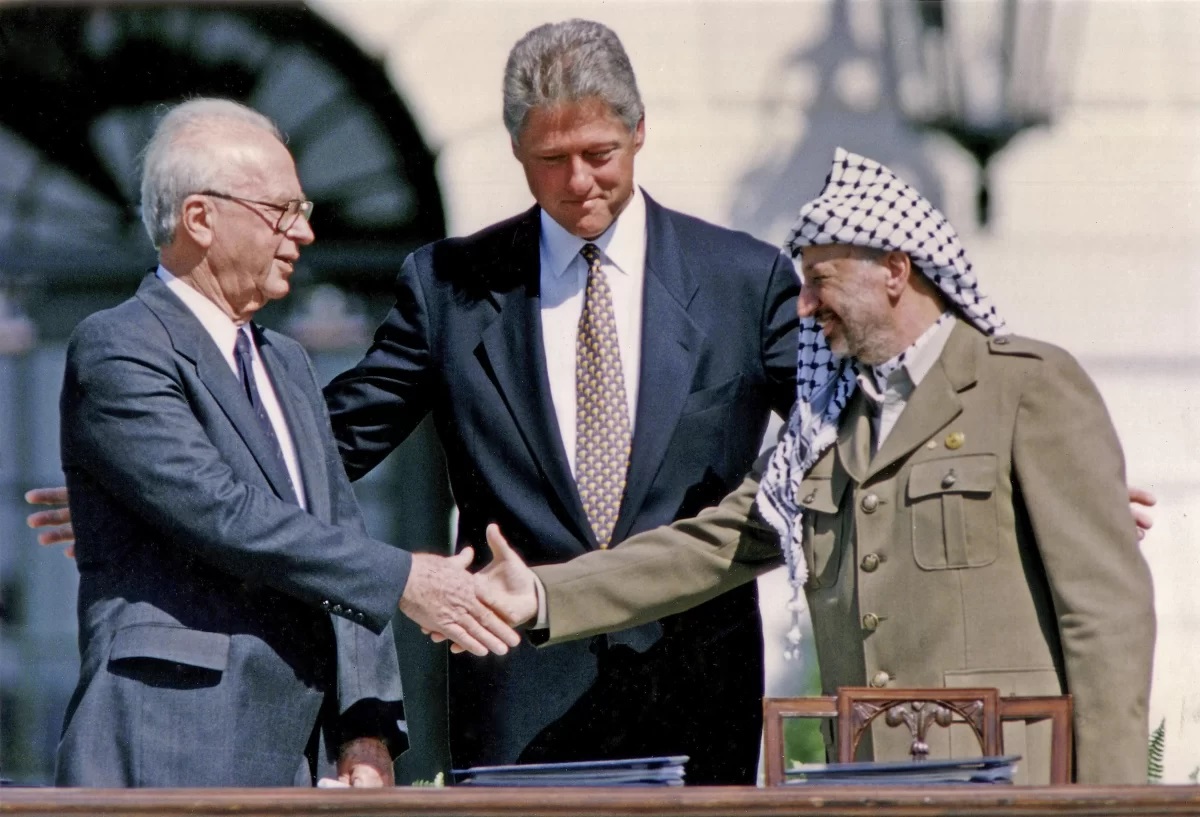The Rise and Fall of the Oslo Accords: A 30-Year Retrospective

Watan-The discussion has resurfaced once again about the so-called “Oslo Agreement,” described as a negotiating process to achieve peace and mutual recognition between the Israeli and Palestinian parties, with a commitment to end the decades-long conflict.
Thirty years after the agreement was signed and the failure of final status negotiations, the establishment of the Palestinian state “seems unlikely in the short or even medium term,” contrary to the hopes and illusions of the Palestinian Authority.
-
Israel Moves to Seize Historic Hebron Market for Settlement ExpansionFebruary 12, 2025
The reality is that the West Bank is now fragmented, and the besieged Gaza Strip, which has been facing a brutal war since October 7, 2023, stands isolated, resembling an “open prison.” Israel has no plans to relinquish control of occupied East Jerusalem, meaning the agreement is now dead and cannot come back to life.
“Oslo 1,” the beginning of the curse!
Nearly thirty years ago, in the U.S. capital, Washington, specifically within the White House grounds, Palestinian and Israeli leaders gathered to sign the Oslo Agreement.
The first Oslo Agreement, signed in 1993, brought together the Israeli Prime Minister at the time, Yitzhak Rabin, and the Palestinian leader of the Palestine Liberation Organization, Yasser Arafat, in the presence of the Israeli Foreign Minister at that time, Shimon Peres.
However, claims that the agreement aimed to achieve peace proved false, and its failure was evident from the outset, as none of the promises made by the occupation were implemented, and all the agreed-upon provisions were violated.
Oslo 2 Agreement
Subsequently, Oslo 2 was signed in Washington in September 1995, addressing the entities that were supposed to be formed in Palestinian territories within the context of the peace process.
These failed agreements suggested that the Israeli occupation would accept Palestinian demands for national sovereignty over a small part of historical Palestine, leaving the rest under Israeli sovereignty!
To achieve these demands, the gradual withdrawal of Israeli occupation forces from Palestinian territories occupied since 1967 was supposed to take place. The transfer of authority to Palestinian administration was also intended, with negotiations later scheduled for issues related to Jerusalem and Israeli settlements in the West Bank.
Partition of the West Bank and Expansion of Settlements
For the sake of those agreements, a temporary Palestinian Authority was established, and the West Bank was divided into Areas A, B, and C. A final treaty was supposed to be reached within five years, but this did not happen.
The extremist Israeli right, including elements opposed to the Oslo Accords, went to the extent that one of its members, Yigal Amir, assassinated Rabin in 1995 for signing the agreements.
Israeli Minister of National Security, Yitzhak Rabin, was among those who threatened Rabin before his death.
On the other hand, the movements of Hamas and Islamic Jihad were not satisfied with the Oslo Agreement and expressed caution about the two-state solution.
This is because the issue of a two-state solution involves relinquishing the right of Palestinian refugees to return to the historical Palestinian lands seized in 1948 with the establishment of the state of Israel.
The Oslo Accords, by virtue of being terminated or concluded, signify the end of their formal existence
As Israel continues its occupation of Palestinian territories and refuses to withdraw militarily from the majority of the West Bank, conducting airstrikes on areas considered under the full administration of the Palestinian Authority, the Oslo Agreement has regressed and essentially died before maturing or evolving.






